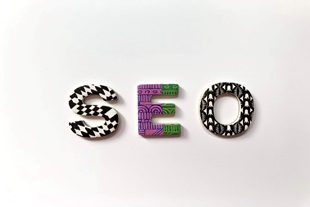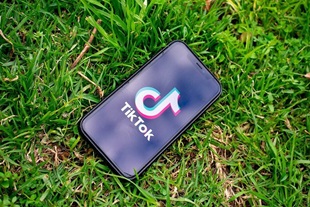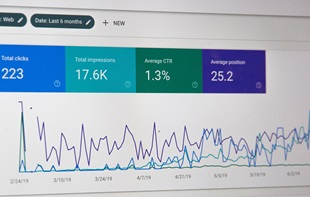10 Steps to Write Effective Product Descriptions that Sell
It’s all about content. Customers may come for the pictures, but they stay for the product descriptions. Sure, colorful photographs and interactive ads are amusing and eye-catching, but they’re not enough to make a user click ‘purchase.’ In fact, 20% of purchase failures are potentially a result of missing or unclear product information. That’s because effective product descriptions will convince customers of why your product is worth purchasing, as 87% of shoppers rate product content extremely or very important when deciding to buy.
In short, your product pages should argue why your product is exactly what your customers have been looking for, why it’s the best on the market, and why your they simply can’t live without it. Now that you see why effective product descriptions are so important, you may be wondering exactly how to produce them. Well, if you consult with a brand design agency and follow these 10 important steps, you’ll be well on your way to optimising your product pages!
1: Be Original
While it may be tempting to just copy and paste from your manufacturer’s site, new and creative product description writing is necessary if you want to increase conversions. For one, Google dislikes duplicated content, which effectively lowers your site’s ranking; in order to move up on Google’s hallowed search pages, make sure to include precise and descriptive keywords instead of simply repeating existing content. Of course, you should still optimise images and videos with meta tags, but your SEO ranking will never soar without original written content.
2: Less Is More
Make sure your writing is short and sweet because “the most effective product descriptions are scannable, concise, and objective. This type of content was shown to improve usability by 124%.” This is likely because today’s users don’t have spare time to spend reading a convoluted paragraph about a single product. Instead, they want to be able to scan a few bullet points or simple sentences and find the information they’re looking for. If you make your content descriptions too long, your customers won’t even bother to read them and you’ll likely lose the sale. If you’re unsure as to how to include important details in just a few sentences, see below for an online store description sample that is informative, yet concise at the same time:
3: Choose Your Words Carefully
Because you’ll be keeping your descriptions short, every word is going to count. Sensory words are usually extremely compelling because they tell the customer what they can’t know from a picture: how a shirt feels, how food tastes, how loud a speaker is or how a candle smells.
At the same time, there are words and phrases you should definitely avoid, such as the generic ‘great,’ ‘best,’ or ‘revolutionary.’ You want to choose words that convey exactly why your product is special, and you won’t be successful in doing so if your descriptions could define anything from organic dog food to a 3D printer.
4: Be Strategically Honest
Every product has its flaws, and yours isn’t any different. Consumers understand that nothing is perfect, but they definitely don’t want to be surprised or mislead. Now, I’m not telling you to write product descriptions about how you’ve fielded complaints from thousands of disappointed customers, but there is a way to be honest about the discrepancies of your product without ruining sales.
A good product description example of using unsatisfactory material to your advantage would be the following: You’ve gotten thousands of angry reviews saying that a certain jumper is thinner than the product image makes it seem. Of course, you don’t want to publish that word for word, but you also know that your customers deserve to know the truth about your product. In response, you write that the breathable material is perfect for holidays, or anytime you might want a lighter fabric. In doing so, you have avoided more disappointed customers who claim false advertising, while using the information to your own benefit.
5: Include Numbers and Testimonials
If your product really is the best on the market, say so — as long as you include the proof to back it up. Instead of simply claiming your car is the safest automobile on the market, write that “thanks to our car’s accurate backup cameras, extra-sensitive airbags, and updated sensory technology, test drives have resulted in the lowest injury/mortality rate when compared to other similar models.” In this way, you’re including the superlatives of being the ‘best’ and ‘safest,’ while ensuring you’re not making an empty claim.
Consumers also love to read testimonials about real customers who have already tried your products and loved them. You are of course going to rave about how wonderful they are, but hearing it from an unbiased third-party often pushes your products from cart to checkout.
6: Keep It Casual
You’re writing a product description, not a thesis. Customers want to feel like they’re hearing from a trusted friend, not from the company they’re buying from. Including humour or wit will keep readers engaged and relaxed, while an overly formulaic or formal tone will remind them you’re trying to sell them something.
7: Know Your Audience
Though it may be tempting to keep your descriptions vague in order to attract as many different types of customers as possible, it’s actually better to decide who your main audience will be and then sell to them. People are browsing your site because they have a specific need in mind, and you won’t be able to meet it unless you force yourself to avoid general descriptions.
For instance, don’t describe your trainers as “the best trainers for every situation.” Instead, write that it is “made specifically with comfort and agility in mind, making them perfect for exercise or dynamic activity.” Taking such a specific route will appeal directly to the people who are looking for the type of trainers you’re selling.
8: Proofread
A writer who can’t proofread is like a cook who can’t boil water, so make sure that your product descriptions are error-free and easy to understand. Having perfect grammar and spelling will increase overall trust in your eCommerce agency and transmit a sentiment of professionalism and excellence.
9: Perform A/B Testing
Like anything else, there’s always room for improvement. Once you have a basic content strategy, you should test different layouts, words and formats to discover the most engaging ones. By optimising your product pages, you’re more likely to increase conversion rates and turn sometimes shoppers into loyal customers.
10: Trust the Professionals
Hiring professionals to consult on your website will ensure you have insightful, expressive and creative product descriptions. These content writers know exactly how to describe products in an expressive and concise way, which is an extremely hard skill! So, if you need the help and you have the resources, don’t hesitate to reach out to a brand design agency that can help you create quality content.
Looking Back
Keeping these 10 simple steps in mind will help you craft effective product descriptions that sell your products instead of just advertise them. These descriptions are extremely important because they provide information to your customers that is impossible to gather from pictures and videos. Moreover, you can publish the best aspects that distinguish your products from the competition’s, such as the fact that it’s handcrafted or award-winning.
So, what are you waiting for? Get writing!
Subscribe To Us




























![10 latest trends in beauty web design and digital marketing [Part.1]](/-/media/Appnova/BannerImages/18376519151_bbeaa6dafc_b-1/trends-in-beauty-web-design-and-digital-marketing/10-latest-trends-in-beauty-web-design-and-digital-marketing-Part1.jpg?mw=310)






0.Comments